Verizon made a strong declaration regarding their DROID brand — it’s not going anywhere. They made that declaration with the launch of three new devices, two of which we’ll be reviewing here today. The DROID MAXX and DROID Ultra are extensions of the latest smartphone innovations Motorola introduced in the Moto X.
With the same software, hardware and much of the same experience, are these phones worth checking out over the Moto X? Does Verizon have a compelling suite of DROID phones to push at the point of sale this year? Let’s find out!
Hardware
Motorola’s take on performance has always been an interesting one. Even since the DROID X days, through the RAZR reboot and all the way up until now, Motorola has never really been too concerned with getting the most powerful collection of specs inside one device. The same rang true with the likes of the Moto X and the latest range of DROID phones, with many criticizing Motorola for using what appears to be “2012 technology.” Are those claims validated?
Specs
The DROID Ultra and DROID MAXX are nearly identicals when it comes to performance specs, though there are a couple of key differences to take note of. Here’s the tale of the tape for the former:
- 5-inch 1280 x 720 Super AMOLED display
- Motorola X8 Computing System (1.7GHz dual-core application processor, quad-core graphics)
- 2GB of RAM
- 16GB of internal storage
- 10 megapixel RGBC ClearPixel camera with 1080p HD video recording
- 2 megapixel front-facing camera with 720p HD video recording
- 2,130 mAh battery
- WiFi a/b/g/n/ac, Bluetooth 4.0, 4G LTE and NFC
The DROID MAXX measures up quite similarly, except you can swap in a 3,500mAh battery and a more comfortable 32GB of internal storage. The added storage is definitely welcome in that package, with Motorola neglecting to add a microSD card slot in any of their latest models. It’s something we’re gravely disappointed in, but it’s a trend that seems to be plaguing any handset which Google has had a hand in these days.
Display
The window of these devices have been a huge point of consideration for many. The aforementioned 5-inch display on both of these models only offer up 720p resolution opposed to most competitors’ 1080p. That’s a turn-off at first glance… until you take a deeper look at the thing. The Super AMOLED display employs a classic RGB subpixel arrangement instead of the less favorable pentile.
This means sharper pixels and better color accuracy. And the pixel density of 294 means this display is still quite beautiful. It’s also built to take some dings with the much-welcome strength provided by Gorilla Glass 3. Motorola’s decision to use AMOLED here was about more than just beauty and vibrance, as its ability to only illuminate the pixels it needs is a major factor in one of the devices’ biggest feature (but we’ll touch more on that later).
Motorola X8 Computing System
Motorola piqued many folks’ interest when they announced their latest phones would look to employ something called the “Motorola X8 computing system.” The early details were cloudy, but Motorola eventually came clean — this processor is a custom version of Qualcomm’s dual-core Snapdragon S4 Pro MSM8960 clocked at 1.7GHz. Wait, what?! Dual-core, you say?
But before you write this thing off, hear me out — it absolutely screams. I’ve already spoken about this in a previous opinionated editorial, and my sentiments deserve echoing here. The efficiency of the two application processors (coupled with the performance-friendly stock Android skin) means these devices are still able to keep up with the quad-core big boys of the moment.
Couple all of that with the fact that the chipset’s GPU — the same quad-core Adreno 320 graphics featured in the Snapdragon 600 configuration — is among the best of the best, and you wouldn’t even know or care that the device has two less application cores than the rest. It’s something I spoke about at length in a recent opinionated editorial, so it should come as no surprise that I’m echoing the same sentiment here.
Also at work within the Motorola X8 system are two low-powered cores for some of the DROID Ultra and MAXX’s key features. I’m speaking of Touchless Controls, Active Notifications, and more. We’ll speak more about these in the software section, but for now just know that these two cores bring features other OEMs can only dream to offer while not sacrificing a lick of battery life.
Build, Look, and Feel
Motorola has a penchant for building tough phones, with their solid track record dating back to the original DROID. I’m happy to report that things haven’t changed a bit, especially when speaking about the Motorola DROID MAXX. That particular model features soft-touch woven Kevlar backplating, a unibody design which wraps around the bottom lip of the device. This helps gives it a durable, yet premium look and feel.
The DROID Ultra also features Kevlar, though its tough backing is covered in what seems to be plastic. It still looks and feels great, but it doesn’t give me the same sort of confidence that the DROID MAXX does. Regardless, both phones are built to take a beating, and will look quite nice up against any of today’s most beautiful pieces of technology.
The device features a 3.5mm headphone jack at the top, and pretty much nothing more. The right side houses the power and volume buttons, with the latter also being the door way to the SIM card slot. These buttons have a very great feel to them, with tactile feedback being satisfying enough to ensure you’ll never question whether or not you pressed it. The bottom of the device features the microphone hole and the microUSB port (which is only used for charging and data sync).
Below the display are capacitive buttons for Home, Back and Recent apps, the latter of which can be customized to be used as a hardware menu button whenever you long-press it. If you don’t opt to use this feature, the phone will present a black strip on the bottom of any app that uses the legacy menu feature. It’s nice to have options, folks.
On the subject of build, I just want to point out the fact that the battery is not removable. Does that make it a bad phone? No. It just means you can’t swap batteries on a moment’s whim. This likely won’t bother those who spring for the MAXX much, but those looking for the Ultra might be disappointed.
All in all, though, the phone feels great in the hand. Some might be put off by the 5-inch form factor, but Motorola did a great job of keeping it slim in all the right places. It doesn’t have that “just right” size and curved form factor of the Moto X, but it still features ergonomics which make it an absolute joy to hold and use.
It’s not the thinnest phone or the lightest phone out there, but perhaps that’s to its advantage — it feels like a real powerhouse piece of mobile technology, and not like a little toy that you wouldn’t mind letting your little ones’ hands get on every now and then.
Software
There was a time where we’d slap Motorola on the wrist for god-awful customization on top of Android, but those days are over. Motorola is done trying to push an overly-bloated skin with horrid design on us. They’ve adopted the stock Android look and feel, with only very minor changes being made to facilitate the unique features which make their latest phones stand out.
As we said before, the result is a much smoother experience across the board. It feels lightweight and petite, and is just as quick as any quad-core genies sitting inside the phones of competitors everywhere. With that, there isn’t a whole ton of stuff to cover in regards to the user interface.
It’s stock Android 4.2.2 as you know it, with things like new lock-screen notifications, improved notifications, a settings toggle and more being offered up. You can read more about all of that in an earlier feature we did regarding the latest version of Jelly Bean. For this review, let’s jump straight into some of the other bits Motorola’s sprinkled on top.
Touchless Controls
One of the biggest features that has me gushing over the latest Motorola experience, Touchless Controls alone could sell many people on these devices. It allows you to activate Google Now commands with nothing but your voice. That means your greasy pizza hands don’t need to be anywhere near the phone to do things like play music, launch an app, or pull up a quick Google Search.
This is one of the features made possible thanks to the Motorola X8 Computing System we mentioned before, as the “always listening” ability of this device is helped along by something called a “natural language core.” This core has one job and one job only — to listen for “OK, Google Now.” You train your phone to your voice, and it will respond within half a second to do mostly anything you wish.
Touchless Controls didn’t perform quite as fast on the Moto X, with folks submitting early reports of 3-4 second delays between the time you say the command and the time the phone responds. I’ve yet to experience any such delay with either of these two DROID phones. I’ve also not experienced any issues with getting the phone to respond in less desirable audio conditions.
Even in the car, situations where multiple people in a room are speaking, a TV is playing in the background and more, the phone was able employ exceptional noise cancellation abilities to discern between my voice and the everything else going on. The phone also does a great job of responding to your voice and your voice alone, with multiple attempts by my sister, brother in law and others to activate the feature proving futile.
Motorola is to be applauded for their use of the natural language core to provide such a feature, because it’s something that would absolutely kill battery life in most other smartphones. The X8 computing system is every bit as significant as Motorola promised it’d be.
Active Notifications
This particular feature is a tag team effort between the Super AMOLED display and the other half of the Motorola X8 Computing System — dubbed the “contextual core.” Active Notifications allow you to get a more detailed look at incoming alerts (as well as time and battery level) compared to something like a tired old LED light. Not only can you see that there is a notification, but you can see which apps the notifications are from, and get limited information about them before deciding whether you want to fully unlock the display.
This information is offered up all day long, and it amazingly doesn’t do a thing to hurt battery life. The display only lights up the pixels it needs, so it’s using a lot less battery life than if you were to turn on the display each and every time you got a new notification.
The contextual core uses the phone’s accelerometer to determine where the phone is, so if it’s turned face down or in your pocket it’ll know not to display anything. Conversely, the contextual core also realizes when you pick it up, and will serve up the information you desire (if it wasn’t already doing so). This is another killer feature that Motorola will win a lot of hearts with, and it’s every bit as useful and crucial as Touchless Controls.
Motorola Connect
While some third party apps offer up the ability to view and respond to text messages from your computer, not all of them work so great (nor do they also add the ability to see who’s calling without reaching for your phone). Motorola sought to developer and add these features to their experience by default. We’d expect a tailor-made solution to work much nicer than a third-party one that’s designed to work on any phone, but does Motorola Connect live up to that promise?
Well, it does… when it wants to. The Google Chrome extension isn’t always the most reliable in the world, with my particular installation often losing connection to the servers (thus rendering the feature useless). The text messaging component works pretty well when it does work, though there have been instances where I’ve gotten information about incoming calls well after I’d already answered the call on the phone itself.
Motorola Connect has the ability to be another one of those great features that some can’t live without, though in its current state I’d be perfectly happy without it. We’ll see if Motorola can improve it in future updates, but for now it’s quite forgettable.
Motorola Assist
Automated, context-aware actions are something many of us long for (apps like Tasker wouldn’t be so popular otherwise). It’s something Motorola looked to add to their software experience in their latest phones through something called Motorola Assist.
It’ll give folks the ability to automatically silence their phones during sleep time, as well as automatically respond to calls and texts while you’re driving or in a meeting. The phone doesn’t even need you to tell it you’re driving — it just knows. Thanks, contextual core!
Similarly, it knows when you’re in a meeting based on your calendar entries. You can even let certain favorites’ calls and messages through during these times, and specify whether you want to be alerted whenever someone calls you more than once within a five minute period. All these features work as advertised, though I would have appreciated a few more options and a little more flexibility.
It’s not nearly as versatile or full-featured as Motorola’s Smart Actions, an app that was featured on many of the company’s pre-2013 smartphones. This app provided Tasker-like functionality, and I would “love Moto long time” if they brought that same experience back in Motorola Assist. For now? It’s there, and the little bit it does have helps.
DROID Zap and DROID Command Center
With these being DROID phones, we expected Verizon to want a little bit of their own razzle dazzle put into the mix. That’s where DROID Zap and the DROID Command Center come in. The former gives you the ability to send photos to a nearby Android user by swiping up with two fingers on a photo. The recipient (who either needs a DROID phone or the DROID Zap app installed) can then swipe down to receive it. It works using a combination of GPS and WiFi, with no NFC to deal with.
I’m not sure how I feel about all of that just yet, but then again this isn’t one of those features making me jump out of my seat to go buy the phone. I have tested the functionality between the DROID MAXX and DROID Ultra, and it didn’t work out too well.
Photos often got hung up in the clouds somewhere, and the few times I was able to pull the device down on the other device, the transfer wasn’t as lightning quick as Verizon’s ads would have you believe. I’m not sure how much more cumbersome it would be to get it to work in less controlled, more random situations, but my experiences suggest it would be even worse. Stick to NFC, or other traditional methods of transferring photos.
There’s also the DROID Command Center, which is a fancy way of saying “circles widget.” You can view minimal battery information, time and weather, and activate DROID Zap or Miracast Wireless Display functionality from this widget (both of which can be activated from the standard settings menu). As much noise as Verizon made about it, I have to admit I expected more. Alas, it’s just a widget — there if you need it, out of the way if you don’t.
Bloatware
Of course, a Verizon phone wouldn’t be a Verizon phone without their fair share of bloatware. The list of pre-installed applications is pretty standard, with the likes of Amazon, Viewdini and more getting their fair share of the spotlight out of the box (alongside all of Google and Motorola’s stuff, natch). Here’s the full list of Verizon-specific stuff if you’re curious:
- Amazon
- Amazon Kindle
- Amazon MP3
- Amazon Appstore
- Audible
- Ingress
- IMDB
- NFL Mobile
- QuickOffice
- Verizon Tones
- My Verizon
- VZ Navigator
- VZ Security
- Viewdini
- Mobile Hotspot
- Voicemail
None of them are an issue if you don’t want them to be, thanks in part to the advent of the ability to “disable” apps (which simply hides them from your apps drawer and prevents them from performing background tasks).
Camera
Before we talk about the quality of the camera, let’s talk about how you launch it. The X8’s contextual core allows you to launch the camera by a quick shake of the wrist, even if the display is off. This gesture is’t always natural, and I found it more awkward to pull off than anything else.
Beyond that, it always takes me 2 or 3 tries to get the camera to launch, which makes me want to just unlock the display and launch it from the lock-screen anyway. I would have preferred a hardware shutter button, of course, but considering how rare those are these days I can’t say I’m too surprised or disappointed.
Motorola’s introducing a new type of camera that they hope will get people off their backs about a history of poor sensors. It’s the 10 megapixel “ClearPixel” camera, which adds a cyan wrench into the standard RGB affair most backside-illuminated cameras tend to employ. The end result is supposed to be a camera sensor that performs exceptionally well in low-light conditions.
Sensor Quality
I’m sad to say that the camera still doesn’t impress in that particular area without the help of the device’s LED flash (and even with the flash it looks just as ordinary as any camera does). Pictures come out more fuzzy than clear in that regard, and it leaves a rather bland taste in my mouth (when compared to cameras from other top smartphones, anyway).
Pictures being taken in well-lit rooms and in natural daylight tend to fare much better, with Motorola able to deliver a nice, crisp picture that any photo snapper can be proud of. I’ll award them a slight pat on the back, but nothing more as I expect any halfway decent camera sensor to perform well in those sorts of conditions. Take a look at this mixture of photos in varying conditions.
Video recording quality is quite nice (again, in optimal lighting conditions), with 1080p footage providing a nice, clear picture. Framerates are solid thanks to the camera being able to capture the scene with 60 frames per second. The device’s microphone also does a great job recording audio and picking up the voice of subjects and ambient noise.
Of course, it won’t produce the type of audio that would make a motion picture director proud, but we don’t expect it to. Take a look at a full-speed HD camera sample:
Here’s one taken with the slow motion video capture feature:
As you can tell, there’s absolutely no audio recorded in this mode, and the slow motion effect is a bit jittery. Finally, here’s a quick message from our little friend, the Phandroid Blue BugDroid:
The 2 megapixel front-facing camera will provide ample performance for the all-important selfies and video chatting, provided you have adequate lighting. It records video in up to 720p HD, which should suffice for face-to-face communication on the go.
Camera Software
This is one area of the operating system where Motorola decided to departure from stock Android a bit. In fact, it’s the most significant departure throughout the entire experience. Motorola’s goal was provide a clean, gesture-based user interface for which to take your photos and video.
While I love the simplified controls (swipe left and right to access settings and the gallery, tap anywhere to snap a photo or record video, swipe up or down to zoom in or out, etc.), I was a bit disappointed with the utter lack of options. I can take a panoramic photo, I can enable HDR mode, and I can choose a slow motion mode for video, but that’s it.
The other set of options are standard affair, with the ability to toggle flash, shutter sound and geolocation all presented to me. Where are the filters? Where’s Google’s Photosphere? And why the hell can’t I change video recording quality or image size? I suspect that last one is due to the technology at work within Motorola’s ClearPixel sensor, but I have been unable to get an answer from Motorola either way.
In all, this device’s camera isn’t something that would leave a lasting impression on me at retail. It’s there. It works. It occasionally produces usable photos. But that’s it.
Media
Speaker quality is something that is so vastly important to media lovers like myself. After owning many devices and being disappointed in their speakers, I have to say that Motorola has really won my heart with the DROID MAXX. Notifications are nice and loud, and music and video sound good enough to listen to without running for the first pair of headphones I can find.
One thing I didn’t like was the fact that all the audio is contained tightly within the speakerphone’s designated area, which makes it easy to muffle the sound whenever it’s in your pocket or sitting on a cushioned surface.
To test it, I tried covering the speaker area with nothing but my finger, and if it weren’t for me actively listening for audio (and the vibration it makes up against my skin) I wouldn’t know anything was coming out. Perhaps that’s a testament to how well-built this device is, though I’d prefer a little bit of sound bleed to make sure I don’t accidentally miss a call or notification.
Beyond that, things are peachy. Music needs are taken care of through Google Play Music by default, a decent video player will play most typical files, and whatever else is missing can be had from the Google Play Store.
Unfortunately I was unable to test the device’s Miracast functionality, which allows you to mirror whatever is on your phone onto any Miracast-compatible display or dongle. The option is there, though, if you didn’t believe it from the product description Motorola puts out.
They also neglected to include any HDMI-out functionality through something like an MHL port, so if you aren’t down with wireless then you don’t have many other options. I wasn’t particularly thrilled with that, obviously, but it’s the reality that you’ll have to live with if you want either of these phones.
Odds and Ends
Benchmarks
The few benchmarks I ran with this phone fared as well as I expected. The information Antutu spit out wasn’t surprising, with the DROID Ultra and MAXX lagging behind top tier chipsets inside the HTC One and Samsung Galaxy S4. At the same time, graphics performance stood toe-to-toe with the best of them (and maybe even a little better thanks to the fact that the GPU only has 720 progressive pixels to push as opposed to 1,080).

Both devices consistently scored in the low 20,000s on Antutu, with neither ever going much further than 21,000. Oddly enough, this was a few thousand points more than what the Moto X was able to achieve, a phone with largely the same hardware. These two class of phones were nearly identical on Quadrant, though, with an average of about 8,500.
Battery life
I could speak so much about battery life on these phones that my tongue would fall out at the end of it all. I’ve already talked about how the Motorola X8 computing system uses low-powered cores to push innovative features without sacrificing battery life. The entirety of the chip is quite battery efficient as well, with Qualcomm’s dual-core silicon being known as the best in the business in this area.
Motorola promises 24 hours and 48 hours of battery life (with typical usage patterns) for the DROID Ultra and DROID MAXX, respectively. I’m happy to say that they have definitely hit the mark on those figures. In both cases, I was able to push quite close to those boundaries on several different occasions, with my “typical” day being several dozens of emails, 1-2 hours of phone calls, text messaging, web browsing, Google+, Skype, Facebook, Twitter, and more.
Every day is different so I won’t try to go into a detailed account of my usage, but I tend to push about 3-4 hours of screen on time, with a vast majority of my time spent on WiFi (I jump to LTE occasionally whenever I leave the house, but it usually isn’t for long and I’m not typically using my phone much while I’m out).
I get closer to 48 hours with that screen-on usage on the DROID MAXX with its 3,500 mAh battery than I get to 24 hours on the DROID Ultra, but both cases put smiles on my face when I check my battery levels at the end of the day. PS: the battery life in the graphic above was achieved with close to 2 hours of voice calls.
In a non-scientific stress test (tons of gaming, YouTube, music, calls, web browsing and more), I was able to push the DROID MAXX to 7 hours of screen-on time. It lasted just 17-18 hours during that cycle, but I was literally on the thing all day. Some days I get closer to 18-20 hours on the DROID Ultra and 1.5 days on the DROID MAXX, but that usage is always fluctuating based on what my day calls for. Regardless, these phones can get anyone through a day (and, in some cases, more than 1-2 days if you’re really trying).
Simply put, the hype about battery life on Motorola’s latest phones is real. Heck, it was real back when Motorola was crowned the battery king when they first introduced the Motorola DROID RAZR MAXX and RAZR MAXX HD.
The fact that I was able to get the usage I mentioned with features like Touchless Controls and Active Notifications always “listening” for voices and contextual events is nothing short of amazing. If you value good battery life and want a phone that delivers, then you won’t be disappointed (especially if you spring for the $300 DROID MAXX).
Call quality and reception
That this section is at the end of our review is quite odd, no? I mean, it is a phone, after all. Call quality should probably be at the top of anyone’s list of things to worry about when it comes to deciding on a new phone. Perhaps you could look at it as us saving the best for last… maybe. But I digress. The skinny is that there’s nothing to worry about here, and that’s something I expected.
Motorola’s noise cancellation remains some of the best in cellular, and callers on the other end have had absolutely zero complaints about being able to hear me clearly. On the flip side, the ear piece is loud enough to hear your compadres without an issue (even if you’re standing on the side of a roaring road).
Motorola has made a spot clean reputation for themselves in this department over the years, even dating back to the days of the first ever cellular phone (which Motorola coincidentally introduced back in 1973). It doesn’t surprise me to see that trend continuing in their latest crop of smartphones.
On a related note, I have had no reception issues when it comes to 4G LTE and WiFi , nor does GPS give me any trouble. There haven’t been many reports of a death grip issue, with the only one I’ve seen to date being reproduced by holding the phone in the most stupid way ever (so stupid that I won’t even attempt to do it myself). If you don’t hold your phone like a complete psychopath, you’ll be fine.
Verdict
If you haven’t already figured it out, I’m in love with the Motorola DROID phones (more so the MAXX with its added 32GB of internal storage and 3,500 mAh battery, of course, but in love nevertheless). Motorola has taken a very significant step forward with these latest releases. Their decision to ditch what we used to know as MotoBLUR for nearly stock Android is no doubt welcoming.
While I was a little worried about the devices’ chipset, my time with both of these phones have wiped away any doubts I’ve had about Motorola’s direction. They’ve concocted a tailor-made chipset that can perform well under pressure, and can stand toe-to-toe with the big boys that lets them introduce features than those with more ordinary offerings can.
Motorola doesn’t tuck many surprises away, and in a way that’s great. More is less in this case, and their desire to keep things simple makes for a very pleasing experience overall. I am a bit disappointed with the camera for several reasons, but it’s forgivable in the grand scheme of things — I’ll put up with the few sore spots and blemishes these things have if only to be able to experience all the other bits of greatness stuffed inside these Kevlar-coated bundles of joy.
Positives
- Clean, lean stock-ish Android UI
- Kevlar unibody build
- Battery life, battery life and battery life
- Unique features (Touchless Controls and Active Notifications)
- Motorola X8 computing system
Negatives
- Camera so-so in low light
- 720P display
- Lack of microSD card slot
- No HDMI-out
DROID Ultra Overall Rating: 3.5 out of 5
DROID MAXX Overall Rating: 4 out of 5
Ask me anything!
Still have questions? Meet me over at the DROID Ultra and DROID MAXX sections at AndroidForums.com, where I’ll be hanging out to answer any question you might still have about either of these phones. Be sure to create an account over there if you haven’t already. Don’t be shy!









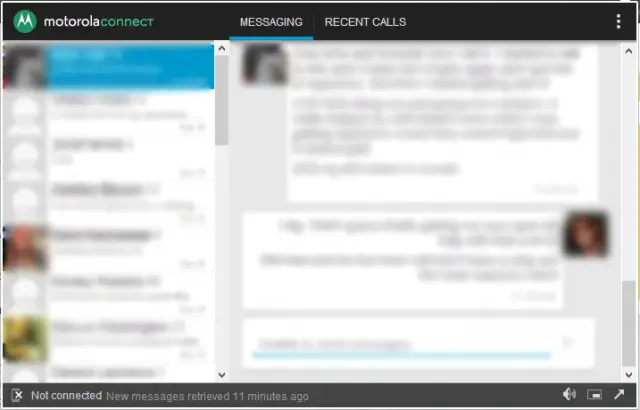





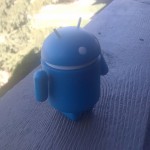











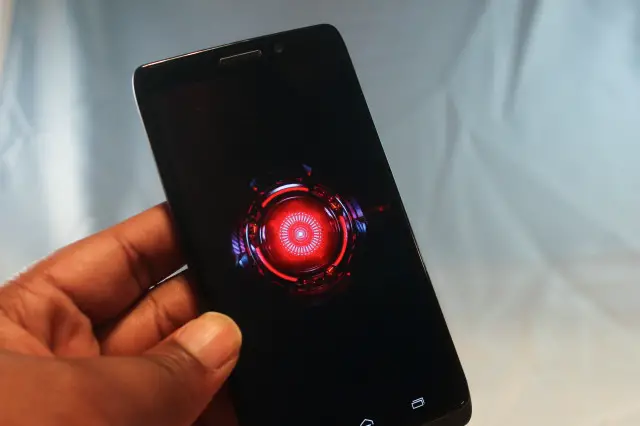
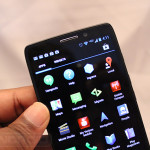



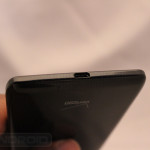
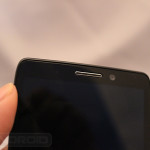
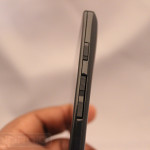
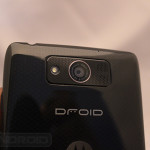
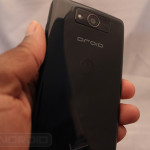
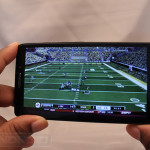
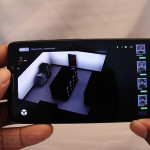


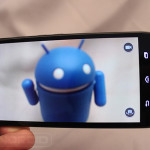
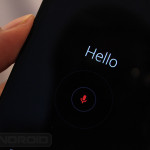
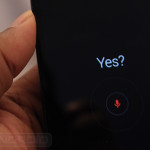

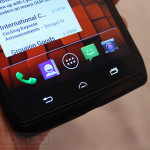

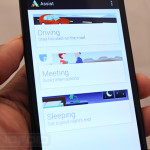

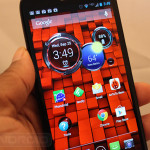


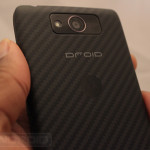
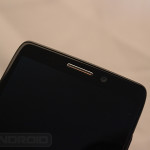
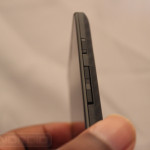
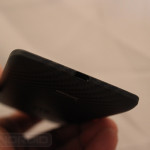
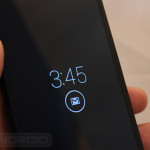
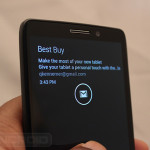



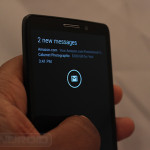
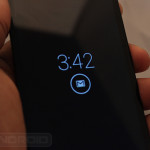
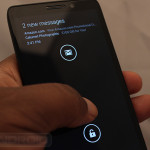

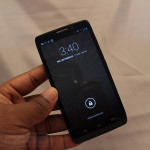
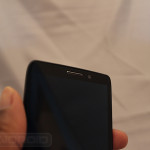
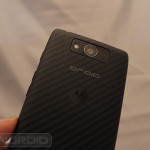
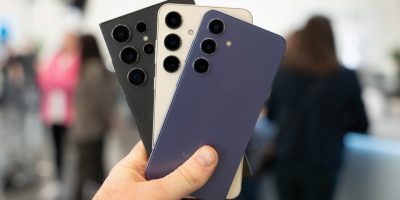

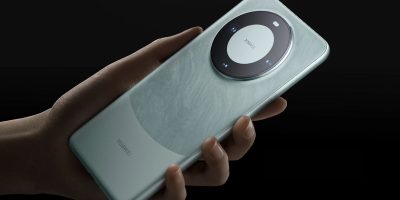
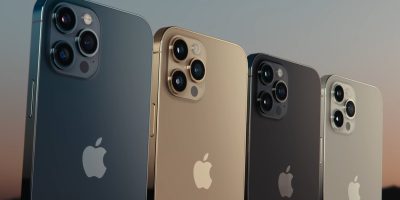





Would we even call Quickoffice bloatware anymore, since it’s owned by Google? For that matter we could lump in Google+, Keep, and Books, as many don’t use them. Sad to see the low amounts of on-screen time on these devices, but them’s the breaks.
I had a day where I was able to push 7 hours of screen-on time (MAXX). Granted, it didn’t last nearly as long as when I only had 3-4 hours, but it was still damn impressive.
I agree, but then I take into account reports of 4-5 hours on N4’s and I’m disappointed by the MAXX. It’s still great, but I expected more. I am always happy for an RGB S-amoled.
appreciate the thorough review!
Touchless Controls does seem pretty cool. After Apple steals that one it will probably be hailed as one of the greatest technological advances of the century.
If the camera were better I’d have one these phones in my pocket right now.
At the rate Moto’s going, wait two weeks and after a software update the camera will be up to snuff
Motorola is now the “Nokia” of Android devices. Were they not bought by Google, they would have fallen already and likely gone quickly the way of Blackberry- just like Nokia was about to do until propped up by Microsoft.
These are middle of the road devices now and one point that help differentiate like Samsung was the sd slot. Samsung thanks Moto and similar companies treating middle tier devices as flagships.
sure buddy…..
lol…i dont like these phones i like the x…but id take them over ANYTHING samsung offers easily
I love the “glow” effect the camera put on those bananas… how’d you access that in the camera?
The photo samples look quite terrible, but the general poor quality and apparent ‘glow’ around the subjects seems to me symptomatic of a finger smudge on the camera lens. This effect is normally amplified when using the onboard flash, and we see that in these pictures as well. Are you sure you properly cleaned off the glass in front of the lens before taking the pictures? If you did, than this phone’s camera is a total fail, but I suspect that the phone is capable of taking much better images than what we see here.
I do check the glass over the lens before taking shots. The performance was similar on both the DROID Ultra and MAXX so I’m not so sure that was the reason. I will have to try the flash again in different circumstances as I, too, believe that shouldn’t be happening.
If it’s any encouragement, the Moto X (same hardware / software) camera update (which is nowhere to be seen for Verizon yet) does appear to fix some of the camera’s issues.
Also, I feel like the Touchless Controls have a way to go still. Handy to wake the phone up, but relatively unintuitive after that – i.e. there’s still a lot of phone interaction required for some more important commands.
I agree, but it’s one reason I’m glad Motorola included it as an APK and not a system-level feature. They can add to it at any time for all of the phones that include it.
Q, do you personally prefer the Maxx over the HTC One (GE or Sense 5)?
I like what Motorola did, I just wish they would bring a flagship like this to other carriers. The Moto X is way too small for my liking.
For almost twice the battery life, double memory, and less than 2mm added thickness, why the heck not I’d say!
Edit: Thought you were talking about the Droid Ultra…
No prob lol
From what I understand the MAXX is SIM card unlocked, so you can use T-Mobile, ATT, or any European SIM. A buddy of mine swapped in a T-Mobile nano SIM and it worked just fine.
Wow, that camera sucks! That’s saying something being a N4 owner myself.
Yes .
Firmwares update like moto x must coming to Droid Maxx! It will improve the camera quality.
I’ve done a lot of googling and haven’t really found answers:
1) Can app developers make use of the X8 “Contexual” and “Voice processing” cores? It appears not.
2) Can custom ROMs make use of the X8 “Contextual” and “Voice processing” cores? It appears not. Maybe the binaries can be taken from the stock ROMs?
I could not find any APIs or documentation on these cores. It looks to me like X8 based phones are not developer friendly and will never run well with custom ROMs. Am I wrong?
Great review. I’ve had the Maxx since day 1 and think its one of the best all around devices I’ve used to date.
This puppy is easily the best phone I’ve had or played with.
Is there any real difference with these phones vs. the moto x besides screen size, casing material, and customizability? Battery size too I guess…
nice one hand set
its ram is totally boss
Nice review! I’ve had the Maxx since release day and LOVE it!
Not to be picky, but the Maxx also comes with wireless charging. ;-)